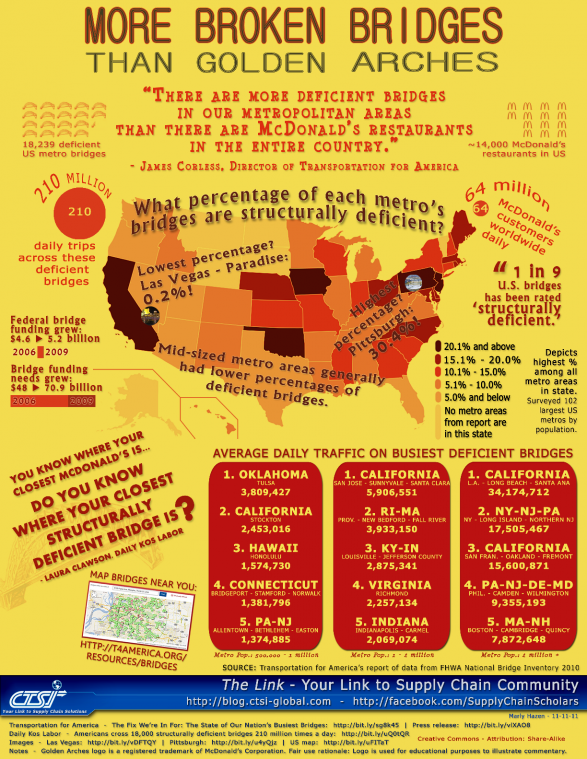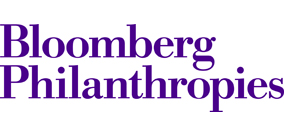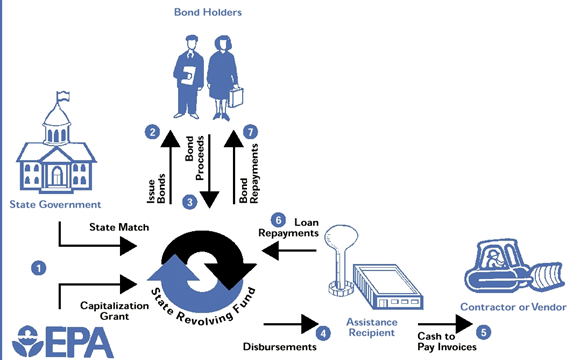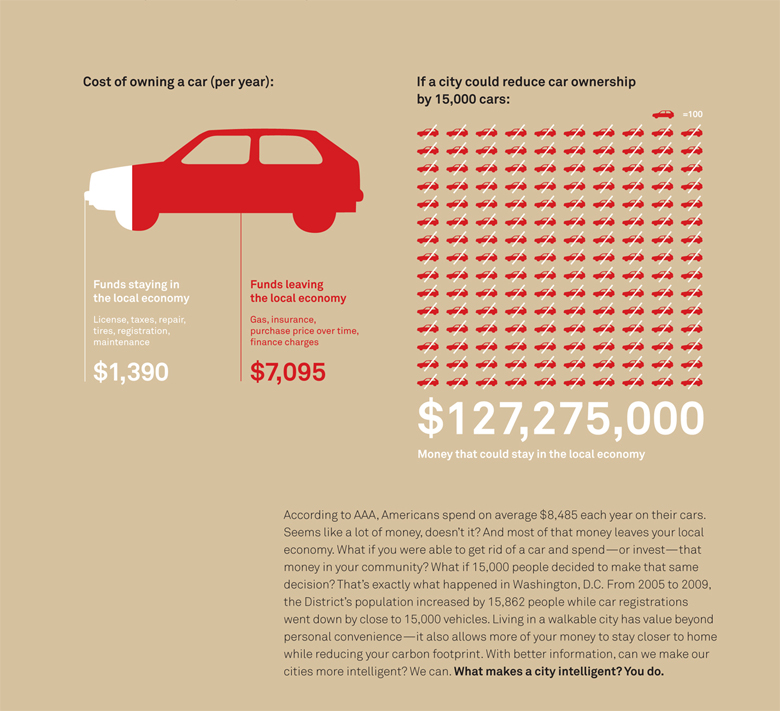USDOT Transportation and Climate Change Newsletter – Late Summer/Fall 2011
Prepared by the Office of Planning, Environment and Realty, Federal Highway Administration
www.fhwa.dot.gov/hep/climate/
To view PDF files, you need the Acrobat® Reader®.
Recent Events and Reports
NHTSA and EPA Issue NOI for Model Year 2017-2025 Vehicle Fuel Economy, GHG Emissions. In an August 9 Federal Register notice (html), NHTSA and EPA issued a supplemental notice of intent to develop fuel economy and greenhouse gas emissions standards for model year 2017-2025 light-duty vehicles, with an ultimate fuel economy standard of 54.5 miles per gallon for cars and light trucks by model year 2025.
FHWA and Volpe Center Release Guide on Incorporating Climate Change Considerations into Scenario Planning, Results of a Cape Cod Pilot Project. A Framework for Considering Climate Change in Transportation and Land Use Scenario Planning: Final Report is a product of the Interagency Transportation, Land Use, and Climate Change Cape Cod Pilot Project a multi-agency project that took place between early 2010 and mid-2011. The Pilot Project provided a transportation and land use development scenario for Cape Cod, Massachusetts, focused on reducing future greenhouse gas emissions and considering the potential impacts of sea-level rise on the region. This scenario was derived from a process of data collection, scenario development by a consultant and regional and local government during a workshop, and scenario assessment. The outcomes of this scenario planning process will inform and support the region’s long-range transportation planning and other related efforts, as well as the planning efforts of local, state, and federal agencies. The report/guidebook gives an overview of the process used and includes lessons learned that could inform future similar efforts. The pilot project was jointly funded by FHWA, the National Park Service, and the U.S. Fish and Wildlife Service.
First installment of Gulf Coast Study, Phase 2 completed. U.S. DOT recently posted the first of several interim deliverables for the project. Task 1: Assessing Infrastructure for Criticality in Mobile, AL examines transportation infrastructure to assess and identify the parts of the transportation system deemed most important to the Mobile area. Analyses were conducted to rank assets based on an analysis of operational, socio-economic and health and safety characteristics for each transportation mode. The information in this interim report and the next one on climate change projections (Task 2) will be used to assess the vulnerability of critical links and assets (Task 3).
Electric Vehicles Study Underway, Interim Products Released. FHWA, AASHTO and the Pew Center for Climate Change have undertaken a research project to accelerate the adoption of plug-in electric vehicles by defining an action plan for integrating these vehicles with the U.S. electrical grid nationwide. Three white papers will be developed as a result of the project including:
- State of Play: identifies and explains (1) challenges for the nationwide development of the plug-in electric vehicle (PEV) market, (2) public policies in place to support PEV deployment, (3) PEV market forecasts, and (4) current PEV deployment (Completed)
- Literature Review: summarizes (1) key externalities that PEVs might address; (2) issues related to PEVs, the electric power system, and the vehicle market; and (3) public policy options. (Completed)
- Action Plan: will propose a set of recommendations for integrating plug-in electric vehicles with the U.S. electrical grid nationwide. The plan will address the respective roles of the various government and private sector players, lay out a timeline for critical steps, and describe an adaptive strategy that takes into account lessons learned. (In Progress)
More information on the project can be found on the Pew PEV Website.
FTA Releases Report on Climate Change Impacts to Transit. Flooded Bus Barns and Buckled Rails: Public Transportation and Climate Change Adaptation is an excellent report that includes a discussion of anticipated climate change impacts on U.S. transit; synthesizes existing vulnerability assessment, risk management and adaptation planning tools with application to public transit agencies; describes strategies for adapting transit assets and operations to climate change impacts; and links adaptation strategies to transit agency organizational structures and activities. Detailed case studies focus on climate adaptation activities by the New York State MTA; the Los Angeles County MTA; Mobile, Alabama’s Wave Transit (part of US DOT’s Gulf Coast Study); and Transport for London.
GAO Releases Report on Federal Climate Change Funding. The GAO’s new report – Climate Change: Improvements Needed to Clarify National Priorities and Better Align Them with Federal Funding Decisions – provides information on climate change funding levels and how climate change activities are organized across the Federal government. The report concludes that two key factors complicate efforts to align climate change related expenditures with climate change strategic priorities: 1) a lack of a shared understanding of these priorities, in part due to inconsistent messaging across policy forums and documents, and 2) the existing mechanisms for aligning priorities and funding are non-binding, and at times conflict with agency responsibilities and priorities. The GAO recommends the establishment of clear federal climate change priorities, including relevant agency roles and responsibilities, and a reassessment of the current practices for defining and reporting federal climate change funding.
TRB Releases E-Circular on Adapting Transportation Infrastructure for Climate Change. Adapting Transportation to the Impacts of Climate Change: State of the Practice 2011, includes ten articles on climate change adaptation issues and activities in the transportation sector.
Report Details Recommendations and Methods for Inventorying GHG Emissions from State DOT Operations. While much focus on State DOT GHG emissions has been on tailpipe emissions from vehicles operating on state roads and highways, this NCHRP 25-25 Task 65 Report, Synthesis of Greenhouse Gas Emission Inventory Methodologies for State Transportation Departments, focuses on the emissions resulting from state DOTs’ own operations.
DOT Headquarters Building Achieves LEED Gold Standard.DOT’s headquarters building has achieved a gold designation for the category “Existing Buildings: Operations and Maintenance Certification.” The building is owned by The JBG Companies. Several highlights of the project are:
- JBG earned an Energy Star rating of 93 during the performance period. (This was the second year the Energy Star designation was awarded)
- Water fixtures were retrofitted resulting in a $64, 000 reduction in water expenditures, a 25% reduction over the prior year.
- The recycling plan was enhanced, resulting in 50% of all waste being diverted from the landfill by recycling. This also included a 100% recycling of mercury containing lamps and batteries.
- The cleaning contractor, Busy Bee, implemented a comprehensive Green Cleaning Program. This includes over 90% of the cleaning products meeting the independent sustainability criteria, such as Green Seal.
- The US DOT purchased 100% of its electricity from green renewable sources.
- The maintenance staff made modifications to the Building Automation System in order to exceed the ASHRAE 62.1-2007 standards for ventilation. In addition, high efficiency MERV 14 filters were installed to reduce airborne particulate for an improved Indoor Air Quality program.
The highlights above are some of the 37 separate credits addressed across all LEED subject areas.
State and Local News
New Initiative Promotes “Smart” Transportation at State DOTs. The State Smart Transportation Initiative (SSTI) is a new working group of state DOT executives interested in transportation reform, for better economic, social and environmental outcomes. SSTI member states also work to improve management and governance of transportation agencies. SSTI disseminates accounts of state-level reform for use by the general transportation community. For example, SSTI has just published reviews of the sea change at Pennsylvania Department of Transportation as well as Washington State Department of Transportation’s Sustainability Efforts. For these documents, or to subscribe to SSTI news, event announcements, and reports, please go www.ssti.us.
Caltrans Issues Sea Level Rise Guidance.Caltrans has developed Guidance on Incorporating Sea Level Rise for use in planning and development of Project Initiation Documents. The guidance includes a two step process to determine whether to include adaptation measures in the project programming and design: (1) determine whether the project will potentially be impacted by seal level rise, and (2) conduct a risk assessment to determine whether the potential impacts warrant spending the resources to incorporate adaptation measures into project design. The guidance includes discussion of ten factors to consider when determining whether to incorporate sea level rise into project programming and design. The guidance also includes a standard set of sea level rise projections to be used statewide.
Wilmington Area Planning Council Publishes Sea Level Rise Transportation Vulnerability Assessment.WILMAPCO’s Transportation Vulnerability Assessment identifies existing and planned transportation infrastructure at risk under Maryland and Delaware-specific inundation and surge scenarios. The assessment profiles both regional and neighborhood-level impacts. A steering committee comprised of local transportation and environmental planners, sea-level rise experts and interested members of the public guided the project. Additional information can be found on WILMAPCO’s sea level rise homepage.
Announcements
CTOD to Hold Webinar on Climate Change and Transit Oriented Development, December 20, from 2:00-3:00 EST. This webinar is one in a monthly series conducted by the Center for Transit Oriented Development and sponsored by FTA. Registration opens two weeks prior to the webinar.
Reminders
FHWA Holding Series of Webinars on Congestion Pricing. The FHWA Offices of Operations and Innovative Program Delivery have launched a new webinar series, entitled “Overcoming the Challenges of Congestion Pricing.” These webinars are aimed at state and local agencies that are currently in the process of implementing or would like to implement congestion pricing; decision-makers/political leaders who want to better understand the benefits of congestion pricing; MPOs that may be interested in incorporating pricing into their planning activities; and others who just want to learn more about congestion pricing strategies. Congestion pricing strategies can often have a co-benefit of reducing GHG emissions. Registration is free and open to everyone who is interested.
Future Webinar Schedule – October through December 2011 (dates are tentative and subject to change)
- October 27 – Integrating Transit with Congestion Pricing and Increasing Congestion Pricing Acceptance
- November 17 — Best Practices in Parking Pricing
- December 15 — Results of the Urban Partnership and Congestion Reduction Demonstration Programs.
If you have any suggestions for inclusion in future issues of Transportation and Climate Change News, or if someone forwarded this newsletter to you and you’d like to receive it directly in the future, please send your suggestions or request to Becky Lupes at Rebecca.Lupes@dot.gov or Heather.Holsinger@dot.gov.







